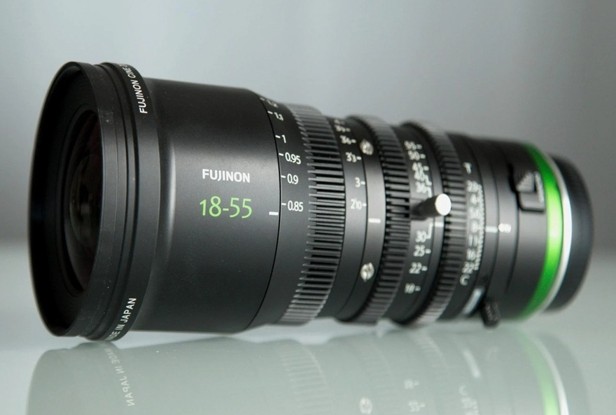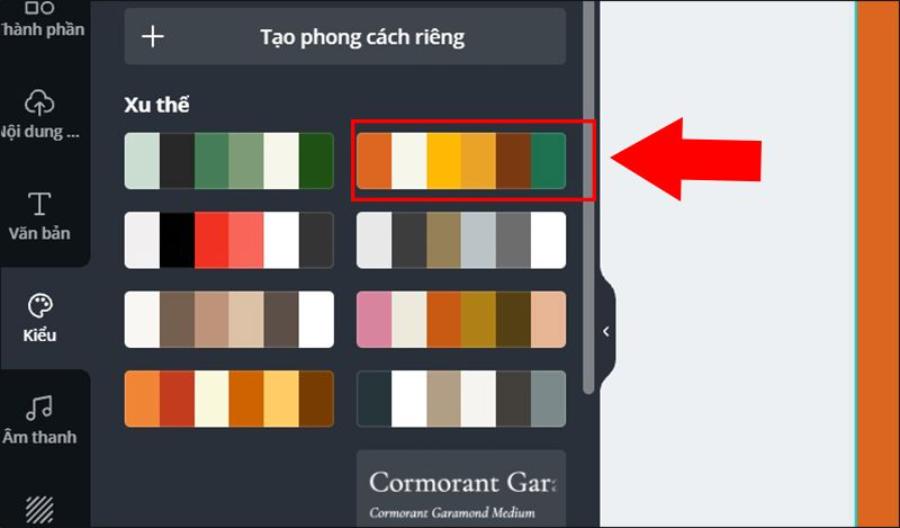Best Selling Products
What is a Parfocal Lens? An Indispensable "Secret to Keeping Focus" for Videographers
Nội dung
- 1. What is a Parfocal lens?
- 2. Structure and operating principle
- 3. Why do I need to buy Parfocal lens?
- 3.1. Keep focus constant when zooming
- 3.2. Optimize operating time, increase work efficiency
- 3.3. Reduce Focus Breathing
- 3.4. Support more precise focusing technique
- 4. Use cases of Parfocal lenses
- 4.1. Professional filming
- 4.2. Sports and wildlife photography
- 4.3. Event, wedding, reportage filming
- 5. Should I buy Parfocal lenses?
A parfocal lens is a special type of lens that is designed to maintain focus even when you change the focal length (zoom). This means that when you zoom in or out, the image remains sharp at the point where you originally focused without having to readjust.

In the world of photography, and especially professional videography, maintaining sharpness throughout the zooming process is not only a technical requirement but also a vital factor to ensure smooth and seamless image quality. This is especially important in fields such as cinematography, sports, live television or advertising projects – where every moment needs to be recorded accurately and sharply.
That is also the reason why Parfocal lenses - lenses that can maintain focus when changing focal length - are considered the "secret weapon" of many professional filmmakers. So what exactly is a Parfocal lens, how is it different from regular lenses? And what are the specific situations where Parfocal lenses can fully demonstrate their power? Let's explore in the article below to better understand this special technology and why it is popular in environments that require high stability when shooting video.
1. What is a Parfocal lens?
A parfocal lens is a special type of lens that is designed to maintain focus even when you change focal length (zoom). This means that when you zoom in or out, the image remains sharp at the point where you originally focused without having to readjust. This is a key factor in motion photography and videography, where every camera movement or framing adjustment needs to be smooth, seamless, and precise.
The name "Parfocal" comes from the Latin words "par" meaning equal, and "focus" meaning focal point. When combined, the words accurately represent the nature of the lens: the focal point remains constant, even when the focal length changes. This brings great convenience and precision during operation, especially in one-shot, unrepeatable shooting situations.
.jpg)
Parfocal vs. Varifocal – Don’t Get Confused!
One of the most common confusions among lens beginners is between two concepts: Parfocal and Varifocal. Both are lenses that can change focal length, but their operating principles and applications are completely different.
Criteria
Parfocal
Varifocal
Keep focus when zooming
Have
Are not
Need to refocus when zooming
Are not
Have
Suitable for
Video recording, fast transition
Still photography, no quick changes required
Mechanical/optical complexity
High
Medium
Varifocal lenses are often used in still photography, where you have time to refocus after each zoom. Meanwhile, Parfocal lenses are an indispensable choice when you need to shoot continuously, zoom quickly and do not have time to refocus.
2. Structure and operating principle
To maintain constant focus when changing focal length, a parfocal lens requires an extremely sophisticated optical and mechanical design. The lens groups inside are precisely arranged and move through a complex mechanism to ensure that the focus plane does not shift when zooming.
.png)
Synchronized moving lens system
The lens groups in a Parfocal lens are controlled so that when the focal length changes, the optical distance between the elements also changes accordingly to maintain the focus. This is a process that is precise down to the millimeter, requiring very high manufacturing techniques, thus also making the Parfocal lens more expensive and larger in structure than a normal lens.
Separate zoom and focus system
One big difference with the Parfocal is that the zoom and focus mechanisms operate independently. As you rotate the zoom ring to change the angle of view, the focus system remains the same without being affected. This ensures that the subject remains in sharp focus throughout the frame change.
Varifocal lenses, on the other hand, have a zoom and focus mechanism that is interdependent. When changing focal length, the focus distance changes and forces the user to refocus. This makes them unsuitable for situations that require fast movement or one-shot shooting.
3. Why do I need to buy Parfocal lens?
Investing in a Parfocal lens is not just about upgrading your equipment, but also about improving your work efficiency, professionalism and image quality. Here are some of the main reasons:
.png)
3.1. Keep focus constant when zooming
The ability to maintain focus while zooming is the most important reason why Parfocal lenses are the top choice of professional cinematographers. When zooming from wide to close-up or vice versa, you don't have to bother re-adjusting the focus, making the scene much more seamless and professional.
3.2. Optimize operating time, increase work efficiency
In live or documentary shooting situations, every second that passes is a moment that may never come back. With a Parfocal lens, you can react quickly, adjust the frame flexibly without worrying about losing focus, saving a lot of time and avoiding unnecessary mistakes.
3.3. Reduce Focus Breathing
Focus Breathing is a phenomenon where the frame changes slightly when zooming or stretching, causing discomfort and losing the aesthetic of the video. Parfocal lenses are designed to minimize this phenomenon, keeping the image more stable even when you adjust the focus or frame.
3.4. Support more precise focusing technique
Parfocal lenses allow you to apply the technique of focusing at long focal lengths, where the depth of field is shallower and it is easier to control the focus precisely. Once you have focused at long focal lengths, you can close in to the wide angle without having to refocus, ensuring the entire frame remains sharp. This is a trick that many cinematographers apply in portrait, interview or product shots.
4. Use cases of Parfocal lenses
Parfocal lenses are widely used in many different fields, especially in professional environments that require high stability.
.png)
4.1. Professional filming
In the film industry, where every camera movement must be precise to the frame, the Parfocal lens is an almost mandatory equipment. Most modern Cinema lenses integrate the ability to maintain focus when zooming, serving techniques such as:
Crash Zoom: Fast zoom creates strong visual effects.
Dolly Zoom: Perspective distortion by combining camera movement and zoom.
Tracking Shot: Move with your subject for a long time while maintaining perfect focus.
4.2. Sports and wildlife photography
In situations where you can’t control your subject, such as shooting sports or wildlife, you don’t have time to refocus after each zoom. Parfocal lenses help you maintain precise focus, regardless of the rapidly changing distance to your subject, ensuring every movement is captured clearly and promptly.
4.3. Event, wedding, reportage filming
Shooting genres that require quick reflexes and no second chances, such as live events, weddings, or press reports, are great for Parfocal lenses. The ability to adjust the frame without losing focus makes it easy to capture precious moments, enhancing professionalism and saving time in post-production.
5. Should I buy Parfocal lenses?
Parfocal lenses are a worthwhile investment, but not everyone needs them. Here are some factors to consider:
.png)
Advantage:
Keep focus constant, no need to refocus when zooming.
Smooth, professional looking images, especially for video.
Supports advanced shooting techniques.
Optimized for fast-paced work environments that require quick reflexes.
Disadvantages:
High cost: Due to their complex design, Parfocal lenses are significantly more expensive.
Large size and weight: Not suitable for compact devices or long handheld shooting.
Few mainstream options: Most are only available in the high-end product line.
Advice:
A must buy if you're a professional videographer, event photographer, or serious content creator, especially if your work requires continuous shooting, lots of zooming, or handling dynamic scenes.
Not necessary if you only take travel photos, portraits or make videos that don't require flexible zoom.
Parfocal lenses are a great choice for those who need high performance, stability and precision. Although the price is not cheap, but with what it brings from saving time, increasing accuracy, to improving product quality, this is a worthy investment for anyone who is serious about professional imaging. If you are aiming for professionalism in filmmaking, reporting or event shooting, Parfocal lenses are definitely a reliable companion.












































